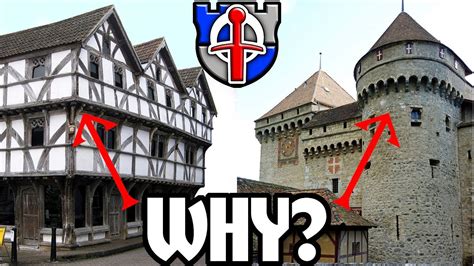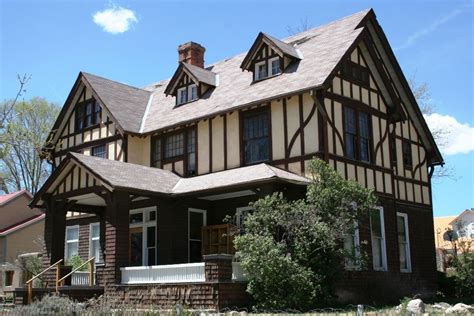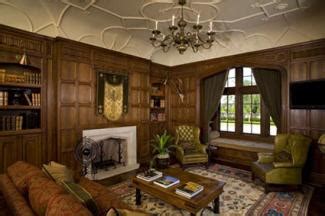tudor architect | tudor style of architecture tudor architect The reign of Henry VIITudor style buildings have several features that separate them from Medieval and later 17th-century design. The earliest signs of the Renaissance appear under Henry VII; whereas . See more #1. Is it worth it to convert to dot 4 lv? Would be in my F150 and the wife's newer explorer sport. Seems like it would be good in Michigan winter but would it really matter? Other than price, what are the drawbacks? skyactiv. Joined. Mar 2, 2013. Messages. 11,914. Location. The Midwest. Aug 14, 2017. #2.
0 · why do tudor houses overhang
1 · tudor style of architecture
2 · tudor revival architecture characteristics
3 · tudor interior design characteristics
4 · tudor architecture wikipedia
5 · tudor architecture interior
6 · pictures of tudor style houses
7 · famous tudor architects
X – LV-ROM Decoder – Domesday86.com. Overview. LV-ROM data storage has a similar format to that used on the Compact Disc in that the basic word size is sixteen bits with a sample rate of 44,100 per second alternating left and right to give 176.4 KBytes/sec. The data is organised in blocks. Each block consists of 98 frames.
The Tudor architectural style is the final development of medieval architecture in England and Wales, during the Tudor period (1485–1603) and even beyond, and also the tentative introduction of Renaissance architecture to Britain. It followed the Late Gothic Perpendicular style and, gradually, it evolved into an . See more

The reign of Henry VIITudor style buildings have several features that separate them from Medieval and later 17th-century design. The earliest signs of the Renaissance appear under Henry VII; whereas . See moreInstitutionalEcclesiastical• The final stages of King's College Chapel, Cambridge (1446–1515)• St Peter and St Paul's Church, Lavenham, Suffolk (1485–1525) See more• Airs, Malcolm, The Buildings of Britain, A Guide and Gazetteer, Tudor and Jacobean, 1982, Barrie & Jenkins (London), See moreUpper classesBuildings constructed by the wealthy or royal had these common characteristics:• An E- or H-shaped floor plan• See more
In the 19th century a free mix of late Gothic elements, Tudor, and Elizabethan were combined for public buildings, such as hotels and railway stations, as well as for residences. The . See more• www.tudor-buildings.co.uk See more
Tudor style, type of British architecture, mainly domestic, that grafted Renaissance decorative elements onto the Perpendicular Gothic style between 1485 and 1558.Tudor architecture was the Medieval architectural style developed in the early part of the Tudor Dynasty in England between the time period of 1485 to 1603. This phase had 6 rulers―Henry .
Tudors: Architecture. The architecture of early Tudor England displayed continuity rather than change. Churches great and small were built in the Perpendicular Gothic style of the later .
Tudor architecture is a style of building that started in England and Wales from 1485 to 1603. It blends elements from the Renaissance with the older Perpendicular Gothic look. You'll know Tudor homes by their half-timbered .These historically important and impressive examples of Tudor period architecture provide a glimpse into the architectural diversity and creativity of the era, reflecting the cultural, social, . The Tudor architecture began with Cardinal Thomas Wolsey's construction of Hampton Court Palace in 1515, shaping a new architectural style during the Tudor era.
Tudor architecture emerged during the Tudor dynasty in England, which spanned from the late 15th century to the early 17th century. The reigns of notable monarchs such as Henry VII, Henry VIII, and Elizabeth I marked this period. Tudor architecture is a type of architecture that was popular in England during the 16th century, during the reign of the Tudor monarchs. These were six monarchs who ruled .“Tudor architecture is an exquisite blend of medieval and Renaissance influences, a unique expression of grandeur and grace that captures the essence of the Tudor period. These historically significant buildings stand as testaments to the creative genius and cultural richness of the era.” Dr. Lucy Worsley, Chief Curator, Historic Royal Palaces.Most architect-designed Tudor homes have forms that are in keeping with their Elizabethan forebears. In most cases, they were one room deep, and the principal portion was either a long and narrow rectangle, a variation of a cross, or in the shape of the letter “E” (it has been suggested that this was in honor of the reigning monarch).
The Origins of Tudor Architecture. Tudor Period Houses originated in England between the late 15th and early 17th centuries, marking a shift from medieval Gothic structures to more personal, home-oriented spaces. A few things shaped this architectural transition: Key aspects of the Tudor period that shaped this architectural style:Tudor architecture is characterized by a number of distinct features, including: Timber-framing: One of the most distinctive features of Tudor architecture is the use of timber framing, which involves creating a structural frame using wooden posts and beams. These frames are then filled in with infill panels made of plaster, brick, or other .The Tudor style in architecture coincides with the first part of the reign of the Tudor monarchs, which commenced in 1485 with the. Tudor style, type of British architecture, mainly domestic, that grafted Renaissance decorative elements onto the Perpendicular Gothic style between 1485 and .Tudor Revival architecture, also known as mock Tudor in the UK, first manifested in domestic architecture in the United Kingdom in the latter half of the 19th century. Based on revival of aspects that were perceived as Tudor architecture , in reality it usually took the style of English vernacular architecture of the Middle Ages that had .
English Tudor Architecture. Tudor architecture was the Medieval architectural style developed in the early part of the Tudor Dynasty in England between the time period of 1485 to 1603. This phase had 6 rulers―Henry VII, Henry VIII, Edward VI, Jane Grey, Mary I, and Elizabeth I.Tudor Architecture Tudor Architecture *Discover the Distinctive Buildings and Characteristics of Tudor Architecture. The middle ages had just ended and a new Tudor dynasty was in power in England with new ideas and new styles of architecture *Tudor period in England 1485 to 1603.. Since the break with Roman Catholic Church took place early in the Tudor era, notable .
Architect Robert Bell Hamilton. Tudor Revival type of architecture was so intertwined with politics that Robert Bell Hamilton, who has been described as Australia’s foremost proponent of the Tudor Revival style, became the member for Toorak for the Liberal and Country Party.Tudor architecture was also expensive to build, not easily replicated and prone to maintenance issues. One of the best examples of a Tudor style house in Montgomery County, Maryland is the landmark Newlands/Corby Mansion in Chevy Chase at the juncture of Chevy Chase Circle, Connecticut Avenue and Brookville Road. Tudor architecture is also characterized by steeply pitched roofs, as seen both at Bramall Hall and Paycocke's House. Additional Features. Tudor architecture has several other common features . Tudor architecture originated in England and Wales during the Tudor period of 1485 to 1603. Tudor-style homes feature half-timbered frames that contrast their white stucco exterior, making them easy to identify. The Tudor architectural style made its way to the United States in the 1900s. But, because the materials were expensive, Tudor homes .

Tudor architecture was also expensive to build, not easily replicated and prone to maintenance issues. One of the best examples of a Tudor style house in Montgomery County, Maryland is the landmark Newlands/Corby Mansion in Chevy Chase at the juncture of Chevy Chase Circle, Connecticut Avenue and Brookville Road.
why do tudor houses overhang
Tudor Architecture: A style of architecture that was popular during the Tudor dynasty in England (1485-1603), known for its distinctive combination of Gothic and Renaissance elements. While timber framing is highly associated with Tudor style, Half-timbering is only one characteristic.The Tudor architectural style is the final development of medieval architecture in England and Wales, during the Tudor period (1485–1603) and even beyond, and also the tentative introduction of Renaissance architecture to Britain.
Tudor architecture refers partly to the architectural style that emerged between 1485 and 1603 when artisans built sophisticated two-toned manor homes combining Renaissance and Gothic design elements.Tudor style, type of British architecture, mainly domestic, that grafted Renaissance decorative elements onto the Perpendicular Gothic style between 1485 and 1558.Tudor architecture was the Medieval architectural style developed in the early part of the Tudor Dynasty in England between the time period of 1485 to 1603. This phase had 6 rulers―Henry VII, Henry VIII, Edward VI, Jane Grey, Mary I, and Elizabeth I.
Tudors: Architecture. The architecture of early Tudor England displayed continuity rather than change. Churches great and small were built in the Perpendicular Gothic style of the later Middle Ages. Later in the 16th century, however, the great country house came into its own.
Tudor architecture is a style of building that started in England and Wales from 1485 to 1603. It blends elements from the Renaissance with the older Perpendicular Gothic look. You'll know Tudor homes by their half-timbered frames, which show wood on the outside and are filled in with white stucco.These historically important and impressive examples of Tudor period architecture provide a glimpse into the architectural diversity and creativity of the era, reflecting the cultural, social, and political influences that shaped medieval England. The Tudor architecture began with Cardinal Thomas Wolsey's construction of Hampton Court Palace in 1515, shaping a new architectural style during the Tudor era.Tudor architecture emerged during the Tudor dynasty in England, which spanned from the late 15th century to the early 17th century. The reigns of notable monarchs such as Henry VII, Henry VIII, and Elizabeth I marked this period.

adidas born original price

Top 10 Best Dollar Tree Las Vegas in Las Vegas, NV - May 2024 - Yelp - Dollar Tree, 99 Cents Only Stores, Bulldog Liquidators, Daiso, Five Below, Santa's Wrap.
tudor architect|tudor style of architecture























